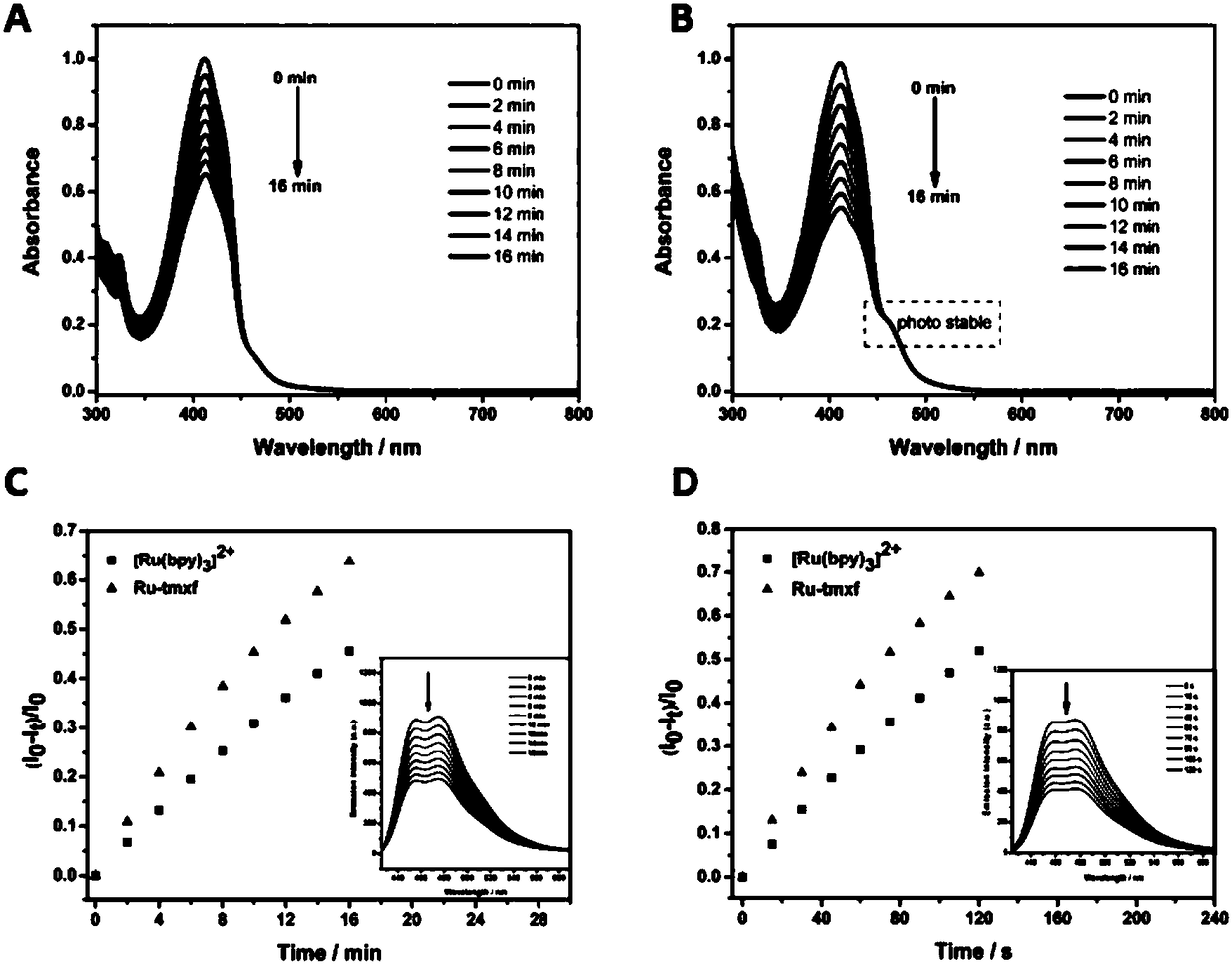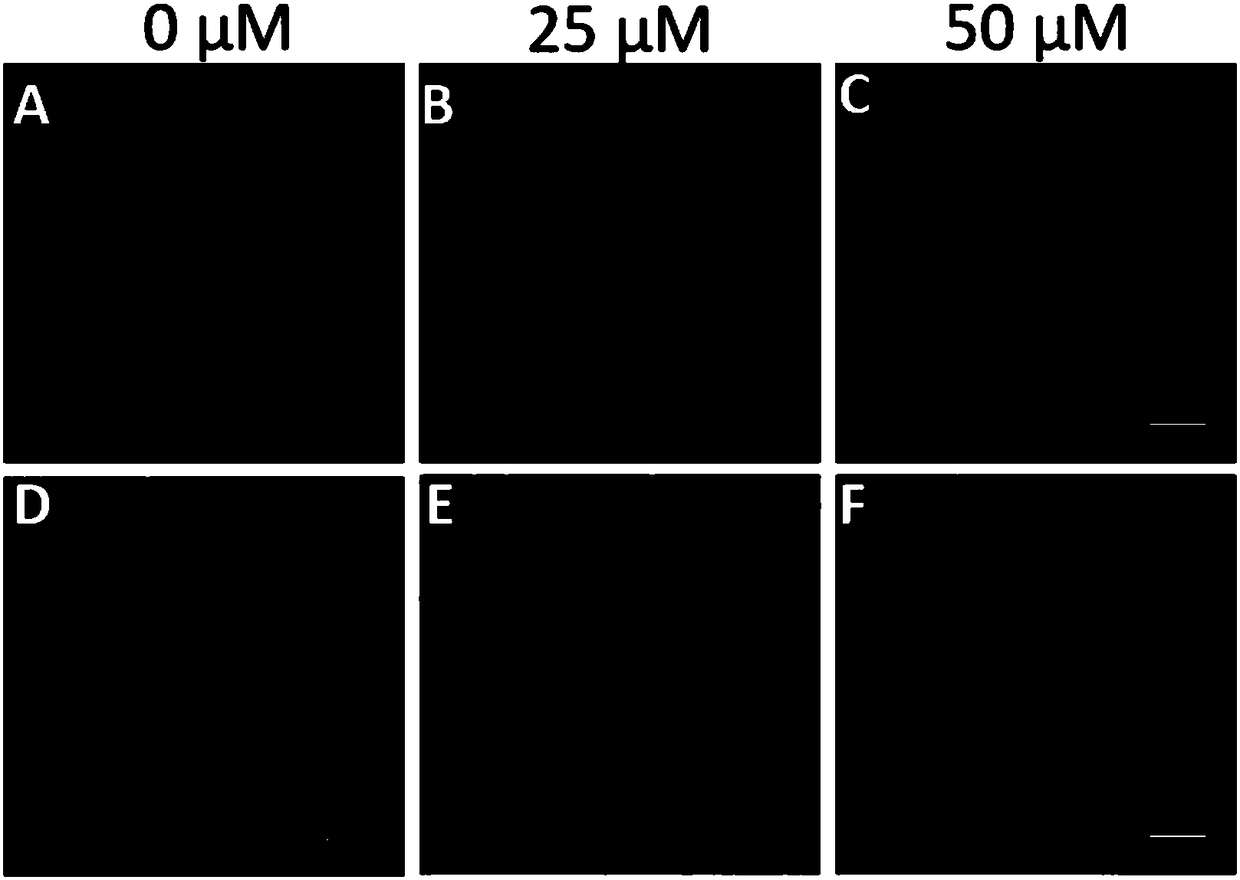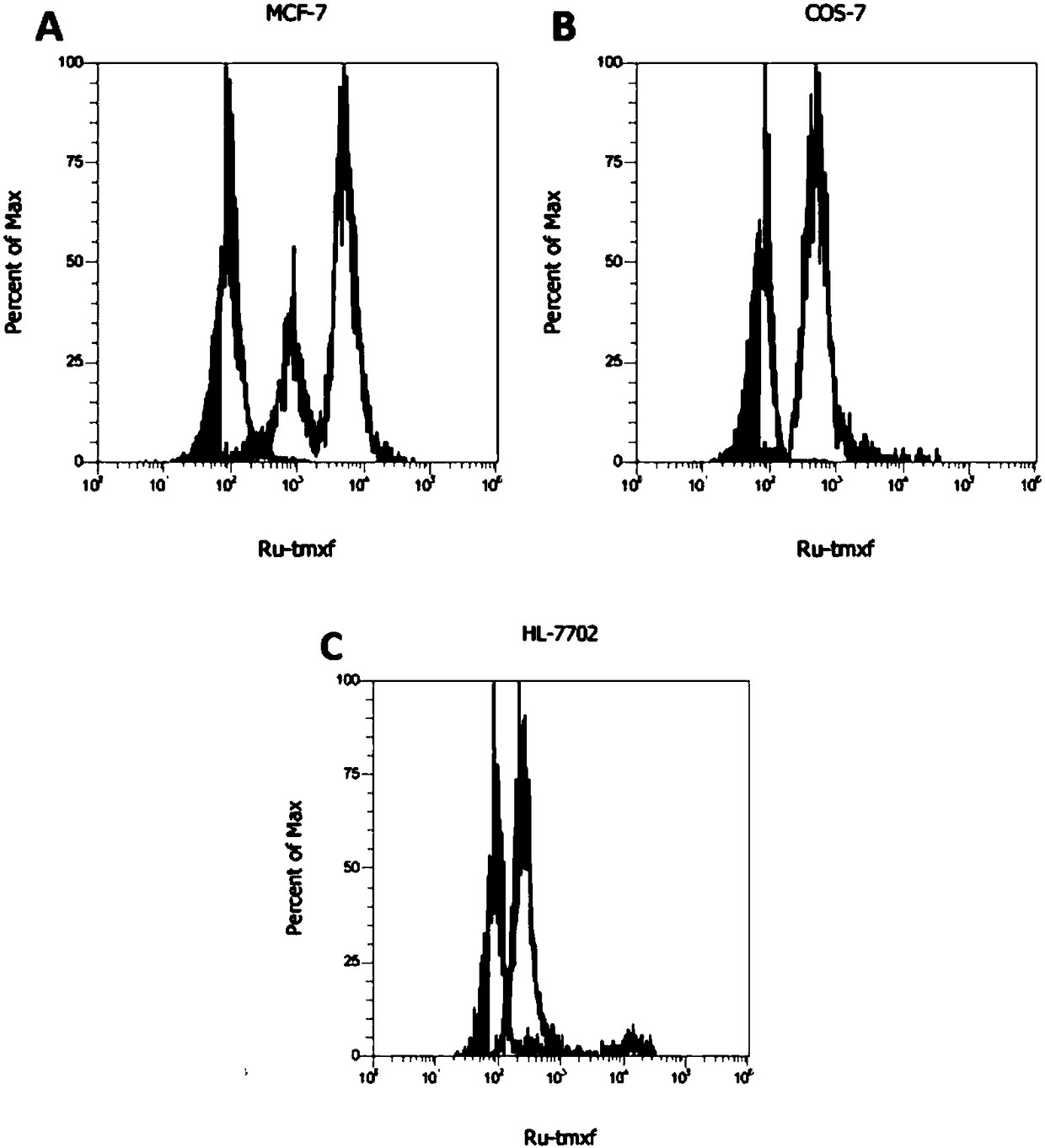O-phenanthroline ruthenium complex photosensitive dyes, and preparation method and application thereof
A technology of o-phenanthroline ruthenium and photosensitizing dyes, which is applied in the field of photosensitizers of ruthenium complexes, to achieve the effect of increasing treatment depth and strong treatment effect
- Summary
- Abstract
- Description
- Claims
- Application Information
AI Technical Summary
Problems solved by technology
Method used
Image
Examples
Embodiment 1
[0053] Example 1. Synthesis of photosensitive molecule Ru-tmxf:
[0054]
[0055] (1) Synthesis of intermediate compound 3:
[0056] The ruthenium complex intermediate 1 (0.106 g, 0.2 mmol) was added to a 100 mL one-neck flask containing 20 mL of ethanol and 10 mL of water, and intermediate 2 (0.1 g, 0.21 mmol) was added, and refluxed for 24 h under nitrogen protection. The solvent was evaporated under reduced pressure. Neutral alumina column separation (dichloromethane:methanol=15:1) to obtain orange-red solid, finally the solid was dissolved in water, and saturated ammonium hexafluorophosphate solution was added to precipitate a red solid intermediate 3 (70%). 1 H NMR (500MHz, CD 3 SOCD 3 ), δ: 3.66(t, J=10Hz, 2H), 4.2(t, 10H, 2H), 7.00(d, J=10Hz, 2H), 7.38(d, J=10Hz, 1H), 7.49(t, J=8Hz, 1H), 7.58(d, J=10Hz, 2H), 7.79(m, 10H), 7.96(d, J=5Hz, 1H), 8.09(m, 4H); 8.39(d, J=10Hz) , 4H), 8.77(m, 4H), 9.18(d, J=10Hz, 1H); ES-MS: m / z calcd for C 51 H 35 N 11 ORu 2+ [M–2P...
Embodiment 2
[0059] Example 2. Singlet oxygen performance test of photosensitive molecule Ru-tmxf
[0060] The 10 μM reference [Ru(bpy) 3 ] 2+ and photosensitive molecule Ru-tmxf were added to a test quartz dish containing 3 mL methanol solution, the absorbance at 415 nm was adjusted to about 1 by DPBF solution, and the dish was placed at 450 nm, 2 mW / cm 2 Under the xenon lamp light source, the absorption spectrum of the solution was recorded every two minutes. The test results are displayed at figure 1 In Figure A and Figure B, the absorption of the solution attenuates at a certain value with the increase of the irradiation time, indicating that the solution produces singlet oxygen under the irradiation of the light source of this wavelength, and with the increase of the irradiation time, the absorption spectrum of the solution The absorption at 460 nm did not change, indicating that the photosensitive molecule Ru-tmxf has good photostability to a certain extent. Similarly, 10 μM of ...
Embodiment 3
[0061] Example 3. Targeted competition experiment
[0062] MCF-7, COS-7 cells were cultured in DMEM (invitrogen) with 10% FCS (invitrogen). 17β-estradiol was employed as a competitive inhibitor of Ru-tmxf entry into MCF-7 cells. 0, 25 and 50 μM of 17β-estradiol were pre-added to the dishes containing MCF-7 cells for 24 h, and then 3 μM of the compound Ru-tmxf was added to the dishes for 2 h, followed by confocal laser imaging. The excitation wavelength of the photosensitive molecule is 488nm, and the acceptance band is 570nm-620nm. from figure 2 As can be seen from the A, B and C panels of (D, E and F are the mixed images of bright field and fluorescence field), the cellular uptake of the competitive inhibitor was reduced, and the inhibitory intensity increased with the increase of the concentration .
PUM
 Login to View More
Login to View More Abstract
Description
Claims
Application Information
 Login to View More
Login to View More - R&D
- Intellectual Property
- Life Sciences
- Materials
- Tech Scout
- Unparalleled Data Quality
- Higher Quality Content
- 60% Fewer Hallucinations
Browse by: Latest US Patents, China's latest patents, Technical Efficacy Thesaurus, Application Domain, Technology Topic, Popular Technical Reports.
© 2025 PatSnap. All rights reserved.Legal|Privacy policy|Modern Slavery Act Transparency Statement|Sitemap|About US| Contact US: help@patsnap.com



